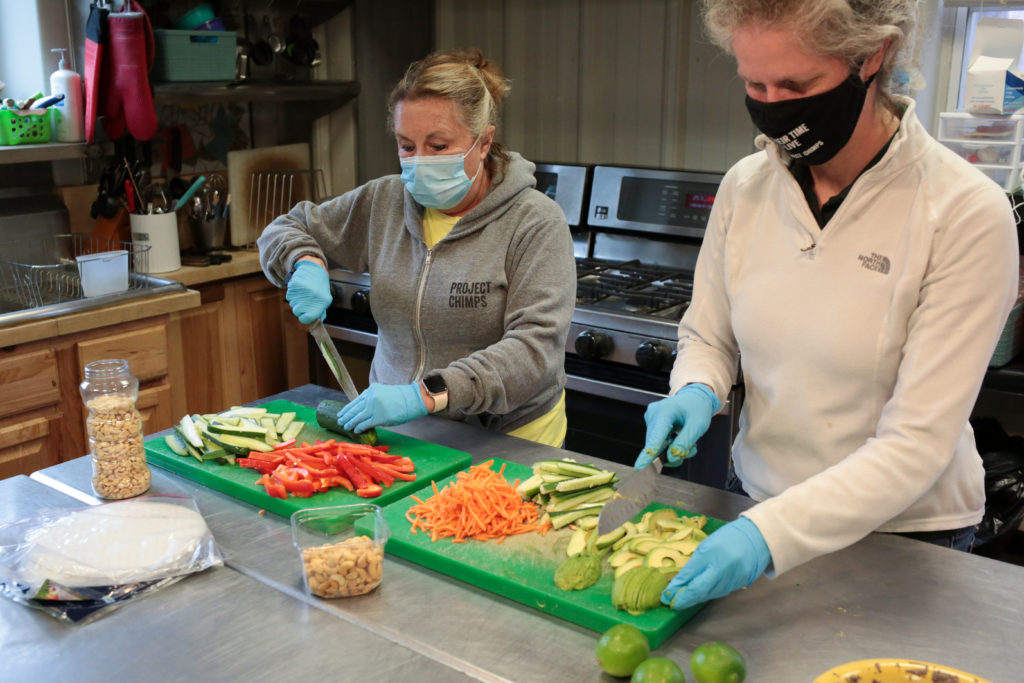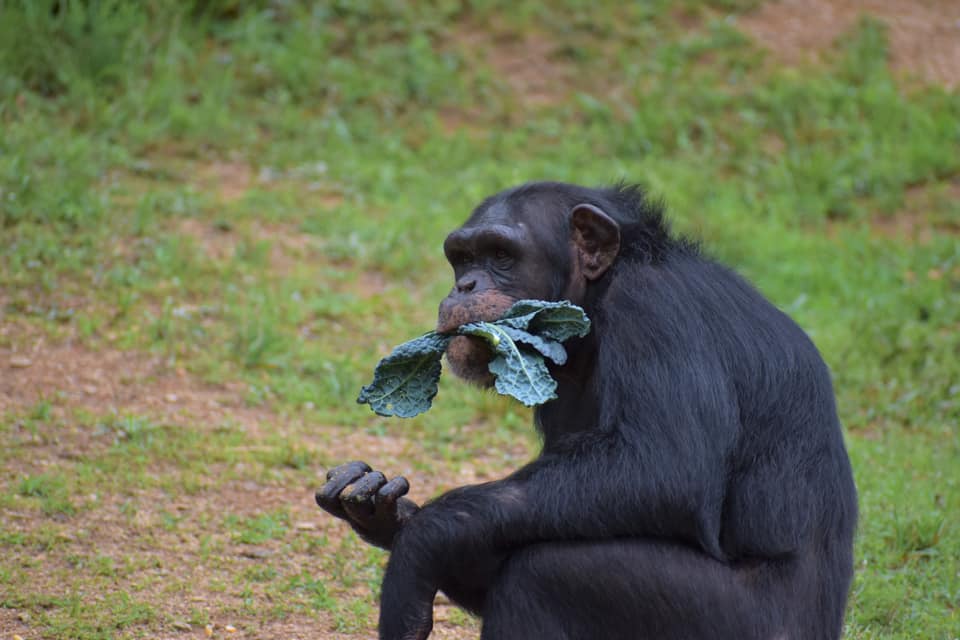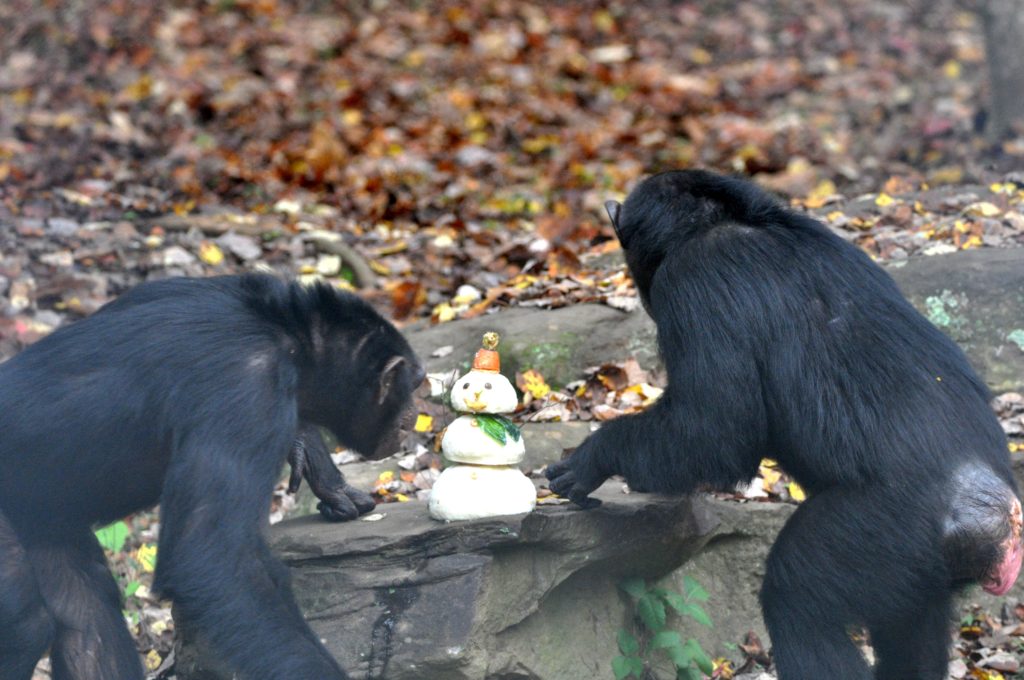
Chimp Diets – What’s on the Menu at Project Chimps?

By Kayla Adgate
What foods do you like to eat most? Chances are this answer depends on your geographical location and culture. Amazingly, regional dietary preferences are not just unique to humans. In the wild, chimp diets are extremely variable. Just like in human culture, a chimp’s diet depends on where they live, and what’s in season.
Chimp diets in the wild and captivity
The Nutritional Facilitator at Project Chimps, Kailie Dombrausky, does her best to mimic the nutritional quality and content a chimp would eat in the wild. Plant material such as leaves and stems are common staples for chimps in the wild. Chimps here at the sanctuary are given a variety of leafy greens such as lettuce, kale, and cabbage.

Another significant aspect of the chimps’ diets is achieved through foraging, which serves as both an enrichment activity and fulfills a key portion of the chimps’ dietary needs.
The fickle palate of a chimpanzee
Chimpanzees can be picky eaters, too!
Just like humans, chimpanzees have their own unique dietary needs and preferences. For example, you will probably try in vain to get a chimp to eat foods such as kiwi, squash, kale, and green beans. But you will be very popular if you present favorites such as onions, eggplant, sweet potatoes, apples, and bananas.
Sometimes it’s tough to make sure chimps get their nutritional needs met. When chimps first arrive at the sanctuary, it can take some time for them to become comfortable enough to eat.
Kailie, says “We do try our best to get each chimp to eat everything we offer, but there is no way to make them eat – or do anything else for that matter!” Presentation is one thing that caregivers tweak for particularly picky chimps. They might try cutting or peeling fruits and vegetables to make them look more enticing or offering food to the chimps in different locations to mitigate comfort levels. A low-ranking chimp, for example, may be uncomfortable eating around a more dominant chimp because they fear their food may be stolen. Much like the school cafeteria – jocks don’t want to eat with the nerds. (Check out our next blog on A Chimp’s Guide to Stealing Food.)

The food that binds
According to Kailie, food is an incredible bonding force that helps build trust between caretakers and the chimps. Sometimes it just takes some time to figure out what individuals need.
One way caretakers help ensure chimps are getting their nutrients is by providing the chimps with chimp chow. Kailie explains that chimp chow is a nutritional biscuit that provides chimps a good portion of the chimps’ protein and fat intake, as well as several key vitamins and minerals. Chimp chow is made by the Mazuri Primate Brand that specializes in exotic animal nutrition.
Readers can help purchase Chimp Chow by donating funds to Project Chimps.

